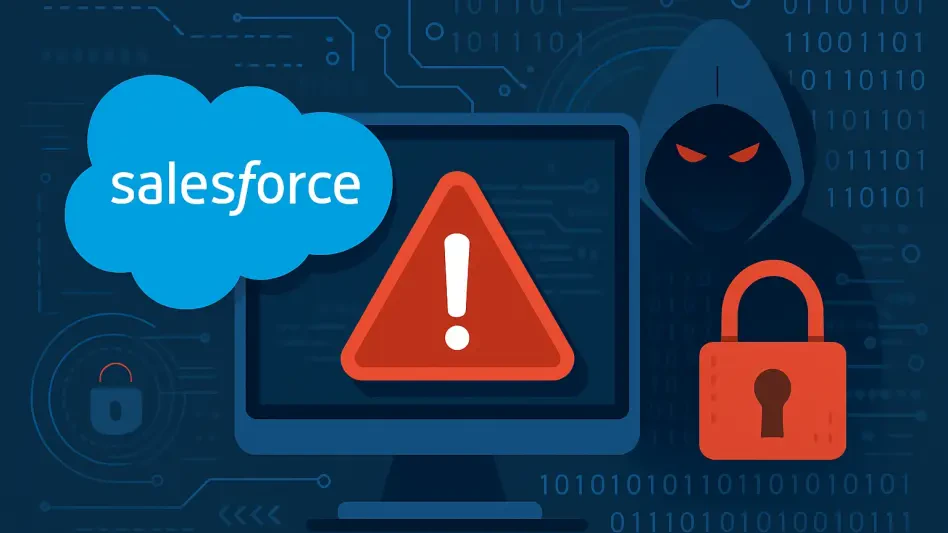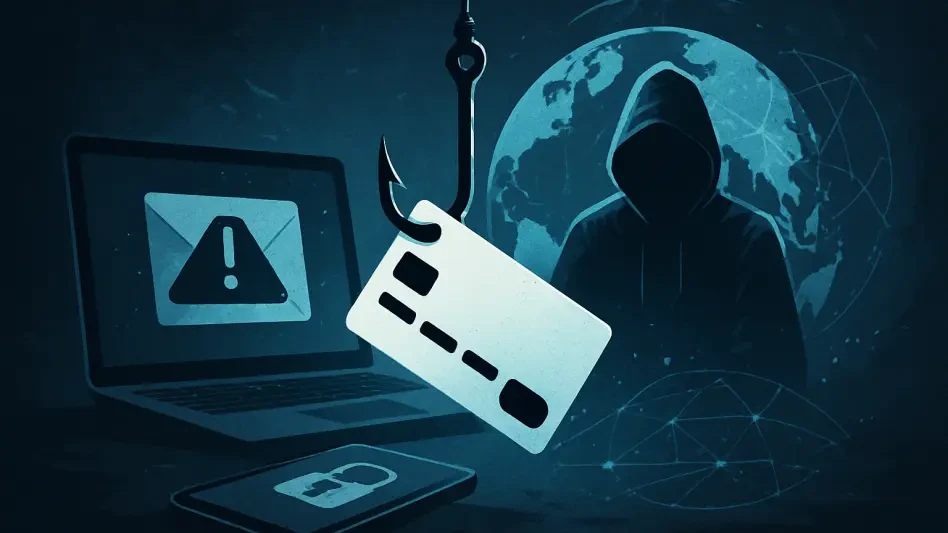Introduction: The Hidden Danger in a Busy Workday
Imagine an employee juggling multiple tasks—responding to urgent emails, preparing for a virtual meeting, and reviewing a critical report—all within the span of an hour, only to have a seemingly legitimate email slip through, promising a reward or warning of an account issue. Without a second thought, a click unleashes a phishing attack, compromising sensitive data, and this scenario is not a rare occurrence but a growing concern in today’s fast-paced workplaces. Multitasking, often celebrated as a hallmark of productivity, is emerging as a significant vulnerability in cybersecurity, particularly when it comes to detecting deceptive emails. This industry report delves into the intersection of human behavior and digital threats, exploring how divided attention amplifies the risk of phishing and what organizations can do to mitigate it.
Understanding the Link Between Multitasking and Cybersecurity
Modern workplaces thrive on efficiency, with employees often handling numerous responsibilities simultaneously. However, this constant task-switching creates fertile ground for cybersecurity risks, especially phishing attacks, where fraudulent emails trick users into divulging personal or financial information. The pressure to manage emails alongside other duties reduces the mental bandwidth needed to scrutinize suspicious messages, leaving individuals more susceptible to deception.
A pivotal study from a leading academic institution, published in a prominent information systems journal, sheds light on this issue. The research focuses on human behavior and cognitive load, demonstrating how multitasking directly undermines digital security. By examining real-world scenarios, the findings reveal that employees under stress are less likely to identify phishing attempts, highlighting a critical gap in organizational defenses that technology alone cannot address.
The Impact of Cognitive Load on Phishing Detection
How Multitasking Impairs Focus
When employees shift rapidly between tasks—such as drafting documents, attending meetings, and checking inboxes—their mental focus fragments. This cognitive overload diminishes their ability to pay close attention to email details, such as unfamiliar sender addresses or subtle grammatical errors, which are often telltale signs of phishing. As a result, deceptive messages slip through unnoticed, posing a direct threat to data security.
The research underscores that high mental load leads to a marked decline in critical thinking. Employees, overwhelmed by competing priorities, tend to skim content rather than analyze it, missing red flags that would otherwise trigger suspicion. This lapse in vigilance becomes a gateway for cybercriminals to exploit human error, amplifying risks across entire organizations.
Statistical Insights and Financial Implications
The scale of phishing as a cyber threat is staggering, with billions of deceptive messages sent daily, according to industry data. A leading email security firm estimates that around 3.4 billion phishing emails circulate every day, targeting unsuspecting users worldwide. Meanwhile, a major technology corporation reports that the average cost of a data breach linked to phishing nears $5 million, a figure that underscores the financial devastation these attacks can cause.
In a comprehensive experiment involving nearly 1,000 participants, researchers compared phishing detection rates under varying levels of mental demand. The results were clear: individuals under heavy cognitive stress detected far fewer fraudulent emails compared to those with lighter workloads. This correlation between mental strain and detection accuracy points to a pressing need for strategies that account for real-world working conditions.
Psychological Triggers in Phishing Attacks
Phishing scams are not just technical exploits; they are carefully crafted psychological manipulations. Scammers often use reward-based tactics, such as promises of gift cards or exclusive offers, to lure victims into lowering their defenses. These messages exploit human tendencies to seek positive outcomes, making them particularly effective, especially when employees are distracted by multitasking.
In contrast, threat-based phishing emails, which warn of account suspensions or security breaches, tend to provoke more skepticism, even among busy individuals. The natural instinct to question alarming news provides a slight protective barrier, though it is not foolproof. Research indicates that understanding these psychological differences can help in designing better awareness campaigns to counter deceptive tactics.
The interplay of cognitive load and emotional triggers further complicates the issue. When employees are stretched thin, their ability to resist enticing rewards weakens, increasing the likelihood of falling for scams. This dynamic reveals a nuanced challenge in cybersecurity, where human psychology plays as significant a role as technological safeguards.
Gaps in Traditional Security Training
Conventional cybersecurity training often operates under the assumption that employees are fully attentive when encountering potential threats. However, this overlooks the reality of modern workplaces, where distractions like background noise, urgent deadlines, and constant interruptions are the norm. Such idealized training fails to prepare staff for the chaotic conditions under which phishing attacks typically occur.
Research advocates for a shift in approach, emphasizing the need for programs that replicate real-world multitasking scenarios. Simulated exercises that mimic workplace distractions can help employees develop practical skills to identify suspicious emails, even when their attention is divided. Without this alignment between training and reality, organizations risk leaving their workforce ill-equipped to handle sophisticated threats.
The disconnect also extends to the content of training modules. Many programs focus heavily on technical aspects, such as identifying phishing links, while neglecting behavioral factors like stress or fatigue. Addressing these human elements is essential to building a more resilient defense against digital deception.
Actionable Strategies to Mitigate Phishing Risks
To combat the heightened risks posed by multitasking, organizations must adopt targeted interventions grounded in human behavior. One effective measure is the integration of brief email alerts that prompt caution before users interact with messages. These reminders serve as a mental checkpoint, encouraging employees to pause and assess potential risks, even in high-pressure situations.
Additionally, training programs should evolve to incorporate distractions and multitasking challenges, reflecting the true nature of workplace environments. By simulating scenarios where employees must juggle multiple tasks while identifying phishing attempts, companies can foster more robust decision-making skills. This practical approach ensures that lessons learned in training translate to real-world effectiveness.
Education on scammer tactics, particularly the use of psychological triggers like threats and rewards, is another critical step. Equipping staff with knowledge about how cybercriminals manipulate emotions can empower them to approach emails with greater skepticism. Combined with technological filters, these human-centric strategies recognize attention as a limited resource and aim to bolster defenses where they are most vulnerable.
Future Directions for Human-Centric Cybersecurity
The broader implications of this research point to a fundamental truth: understanding cognitive limitations is key to strengthening cybersecurity. Multitasking reshapes how individuals process information, often creating blind spots that attackers exploit. Acknowledging these constraints can guide the development of policies and systems that align with actual employee experiences rather than theoretical ideals.
A shift toward human-centric approaches in cybersecurity is gaining traction within the industry. This perspective prioritizes designing tools and training that accommodate real working conditions, such as high-stress environments or constant interruptions. For instance, adaptive security interfaces that adjust based on user workload could help mitigate risks during peak multitasking periods.
Looking ahead, collaboration between behavioral scientists and cybersecurity experts holds promise for innovative solutions. By integrating insights on human attention with cutting-edge technology, organizations can build defenses that are not only robust but also intuitive. This evolution in strategy could redefine how the industry tackles phishing, placing human factors at the forefront of digital protection.
Conclusion: Reflecting on Findings and Charting the Path Forward
Looking back, the exploration of multitasking’s impact on phishing vulnerabilities revealed critical insights into the intersection of human behavior and cybersecurity. The evidence was clear that divided attention significantly hampered employees’ ability to detect fraudulent emails, while psychological tactics employed by scammers further compounded the risk. Financial implications, with costs of breaches averaging millions, added urgency to addressing this pervasive issue.
As a next step, organizations are encouraged to rethink their approach by implementing practical measures like email alerts and realistic training scenarios. A deeper focus on educating staff about manipulative tactics used in phishing emails emerges as a vital component of defense. Beyond immediate actions, the industry is urged to invest in long-term human-centric solutions, ensuring that systems evolve to support employees under real-world pressures. This balanced integration of technology and behavioral understanding offers a promising avenue to safeguard against the ever-growing threat of phishing attacks.








